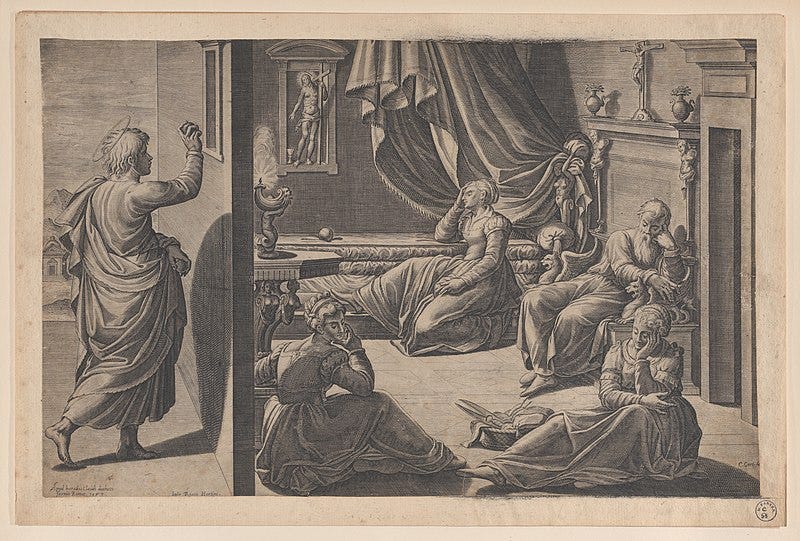St. Nicholas Saves Three, Three Times
In Honor of His Feast Day
St. Nicholas is known for his holiness as the bishop of Myra, a defender of orthodox Christian teaching at the Council of Nicaea in 325, a miracle-worker, and a devout and generous man. Three stories about this saint tell of how he saved three groups of three people—in three very different ways. Let his charity be our example as well.
Saving the Condemned
Two versions of this story exist. In the first, three innocent men were condemned to death. St. Nicholas appeared, confronting the executioner, and pushed aside the sword, chastising the unjust juror who’d accepted a bribe.
The second version tells that three of Constantine’s generals were captured and falsely accused of fomenting rebellion. St. Nicholas appeared in a dream to have the generals set free.

Saving the Murdered
A popular tale found in the Middle Ages and later tells that, during a famine, three boys came to the house of a butcher looking for food and a place to stay. The butcher welcomed them in… then killed them, cut them up, and put them into a pickling barrel.
Seven years later, St. Nicholas stopped by, knowing what had transpired by supernatural means, and asked to be taken to the barrel. The butcher fled. The holy bishop put his fingers on the barrels edge, prayed, and bought the boys back to life.
This is the source of a French Christmas carol, which can be found here.

Saving the Impoverished
Likely the most well-known of these three stories, and an origin of the gift-giving tradition of St. Nicholas Day, St. Nicholas is said to have distributed his parents’ great wealth after their death. He heard of a devout man who had lost all his money and could not afford dowries for his three daughters, likely condemning them to a life of prostitution.
Under the cover of darkness, out of humility and perhaps the desire to save the family from humiliation as well, St. Nicholas went to the house and threw a purse of coins into the family’s window. The father thus was able to arrange a good marriage for his first daughter, after which St. Nicholas did the same for the second.
In the oldest account of this tale, the father stayed awake and caught the saint the third time, thanking him. The saint ordered him to tell no one.


